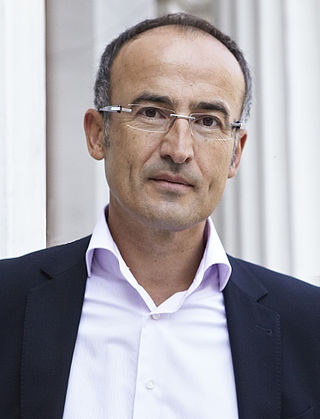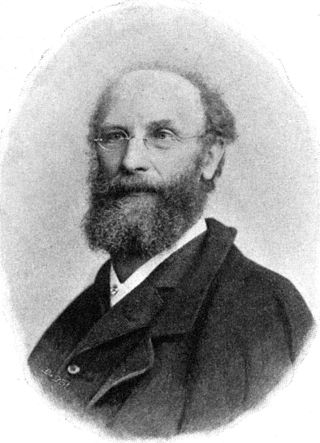Training and influences
Erwin Puchinger was born in Vienna on 7 July 1875. He came from a prominent family of Austrian officials. In 1891 and 1892, Puchinger began evening drawing classes at the newly opened (1888) Graphic Arts and Research Institute (der Graphischen Lehr und Versuchsanstelt). This was an experimental institute that trained professionals in design and the graphic arts. Next, Puchinger studied at the School of Arts and Crafts (Later the School of Applied Art), which was founded in 1867 as part of the new Austrian Museum of Science and Industry (Kunstgewerbeschule des Osterreichen de Museums fur Industrie und Kunst). Puchinger first studied with Ludwig Minnigerode (1847–1930) and then with the famous muralist and art professor Franz von Matsch (1861–1942), who worked on decorative art with the brothers Gustav (1862–1918) and Ernst Klimt (1864–1892), they had a decorating company that did elaborate murals for wealthy clients. Puchinger's earliest known works are landscape and architectural drawings of 1892 and 1893, which were already of a professional quality.
The Viennese Secession
When Puchinger was in the last years of his studies, a group of young architects and artists, Otto Wagner, Josef Hoffman and Joseph Maria Olbrich, rejected the opulent and decadent style of the day and the variety of architectural styles of the Ringstrasse. They were Influenced by classical Greece and Rome and wanted to create buildings that were fresh and modern, where decoration was part of the design, rather than superfluous. Together with a group of young and innovative artists, including Gustav Klimt, Koloman Moser, Max Kurzweil (1867–1916), they broke away from the old academy, the Association of Austrian Artists that had held its exhibitions in the old Kunstlerhaus. They created a new union known as the Union of Austrian Artists (Vereinigung Bildender Künstler Österreichs) that is known as the Vienna Secession (das Wien Sezission). Because Erwin Puchinger's friend and classmate Kolo Moser was one of the Secessionists and the fact that they shared the same influences, his work is quite similar to that of Moser in style and execution. What Puchinger, Moser, Klimt, Wagner, Olbrich and Hoffmann were working toward was a unification of the arts, to erase the division between fine and applied art and to create projects where everything shared the same principles of design and execution, a total approach to art known in Vienna as Gesamtkunstwerk.
The Exposition Universelle
In the year 1900, Erwin Puchinger completed his studies. He had made sketching trips to Capri and Rome, where he absorbed the classical influences. At the Exposition Universelle, the Paris Worlds Fair, of 1900, one of his large decorative paintings was given great prominence in the huge Austrian pavilion. He received accolades in the French, Austrian and British press. The first issue of the famous Viennese design magazine Das Interieur featured his work from Paris. [4]

The University of Applied Arts Vienna is an arts university and institution of higher education in Vienna, the capital of Austria. It has had university status since 1970.

Koloman Moser was an Austrian artist who exerted considerable influence on twentieth-century graphic art. He was one of the foremost artists of the Vienna Secession movement and a co-founder of Wiener Werkstätte.

The Künstlerhaus in Vienna’s 1st district has accommodated the Künstlerhaus Vereinigung since 1868. It is located in the Ringstrassenzone in between Akademiestraße, Bösendorferstraße and Musikvereinsplatz.
Ludwig Merwart was an influential Austrian painter and graphic artist. He is an important representative of Tachism and was a major force in graphic arts and prints, especially after World War II. His work belongs to the most significant and interesting contributions to graphic arts in Austria to this day.

Tobias G. Natter is an Austrian art historian and internationally renowned art expert with a particular expertise in "Vienna 1900".
Franz Rosei is an Austrian sculptor and draughtsman. His brother is the writer Peter Rosei.

Erika Abels d'Albert (1896–1975) was an Austrian painter and graphic artist.

Otto Prutscher was an Austrian architect and designer who worked in the Vienna Secession style.

Rudolf Otto von Ottenfeld was an Austrian military painter, a founding member of the Vienna Secession and a professor at the Academy of Fine Arts, Prague.

Felician Myrbach was an Austrian painter, graphic designer and illustrator. He was a founding member of the Vienna Secession and the director of the Applied Arts School in Vienna, and was instrumental in the creation of the Wiener Werkstätte.

Maximilian Lenz was an Austrian painter, graphic artist and sculptor. Lenz was a founding member of the Vienna Secession; during his career's most important period, he was a Symbolist, but later his work became increasingly naturalistic. He worked in a variety of media, including oils, watercolours, lithography and metal reliefs.

Leopold Forstner was an artist who was part of the Viennese Secession movement, working in the Jugendstil style, focusing particularly on the mosaic as a form.
Leopold Fischer (1902-1978) was an Austrian police officer and much-awarded Pictorialist, and later, Modernist, photographer.

Margot Pilz is an Austrian visual artist and a pioneer of conceptual and digital art in Austria. She was one of the first Austrian artists to combine computers and photography. Her works reflect the avant-garde culture of the 1960s and 1970s in their experimental techniques and performative aspects. Her work received renewed attention in the 2010s.

Ludwig Baumann was an Austrian architect.

Charles Wilda, originally Karl was an Austrian Orientalist painter. He was the elder brother of the painter, Gottfried Wilda.

Johannes Benk was an Austrian monumental sculptor.

Eduard Cramolini also Eduard Kramolin) was an Austrian painter and photographer.
Hugo Haberfeld, was an Austrian Jewish art dealer, who owned the Miethke Gallery in early 20th century Vienna. When Austria joined Nazi Germany in the 1938 Anschluss, Haberfeld fled to Paris.
Ilse Bernheimer was an Austrian painter, graphic artist, interior designer, and teacher.
This page is based on this
Wikipedia article Text is available under the
CC BY-SA 4.0 license; additional terms may apply.
Images, videos and audio are available under their respective licenses.
















